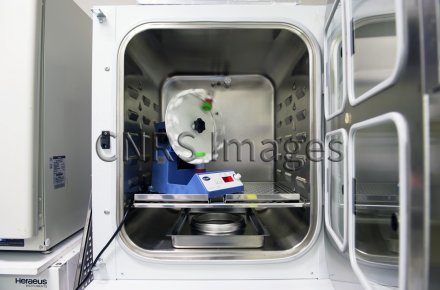Production year
2013

© Cyril FRESILLON/CNRS Images
20130001_2196
Ensemencement cellulaire rotatif, grâce à un agitateur rotatif placé dans un incubateur, pour l'étude des interactions cellules / biomatériaux. Les cellules sont ensemencées dans des matrices synthétiques. Les chercheurs tentent ainsi d'associer différentes cellules avec des matrices synthétiques, de la façon la plus homogène et reproductible possible. L'objectif est d'étudier l'influence des matrices synthétiques sur la destinée cellulaire afin de contrôler et améliorer la régénération tissulaire.
The use of media visible on the CNRS Images Platform can be granted on request. Any reproduction or representation is forbidden without prior authorization from CNRS Images (except for resources under Creative Commons license).
No modification of an image may be made without the prior consent of CNRS Images.
No use of an image for advertising purposes or distribution to a third party may be made without the prior agreement of CNRS Images.
For more information, please consult our general conditions
2013
Our work is guided by the way scientists question the world around them and we translate their research into images to help people to understand the world better and to awaken their curiosity and wonderment.